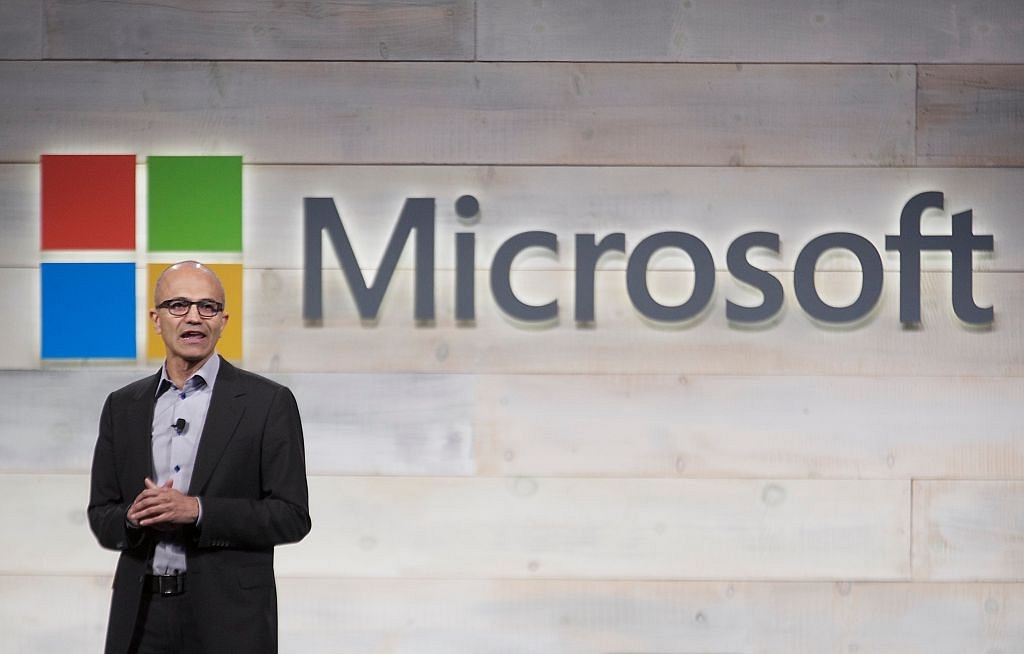Business
Microsoft’s Moment Of Reckoning
- Microsoft’s largest planned acquisition till date will show if it will remain relevant over the next 10 years

Satya Nadella of Microsoft (Stephen Brashear/Getty Images))
By now, the story of Microsoft’s planned $26.2 billion acquisition of LinkedIn has been analysed threadbare by experts and industry watchers, among whom are the usual bunch of sceptics and cheerleaders. There isn’t much to be said that hasn’t already been said about the deal, the rationale (or, lack thereof) or the consequences for Microsoft.
What is, however, been less discussed, has been the journey that led to this deal. It actually began in 1994 when a Silicon Valley startup, Netscape, emerged with the browser (and then the back-end servers) that essentially “democratised” the internet. What was the preserve of academia and defence was thrown open to the general public. Suddenly everyone could access, create, exchange and share content and it was liberating.
Microsoft’s incredibly successful business model was built around the PC (personal computer), on licensing its Windows operating system and productivity applications, mobilising an army of developers and leveraging partnerships with hardware manufacturers. Netscape changed all that. In 1995, Netscape had a high-visibility successful IPO—first day market cap of $2.9 billion—as a loss-making but growing company (very unusual those days but common today) and became the flag-bearer of the dawn of a new industry. It rapidly acquired more than 90 percent share of the browser market.
Bill Gates’ famous 1995 memo, The Internet Tidal Wave, captured Microsoft’s paranoia as it confronted the existential threat posed by Netscape and its ilk. It launched the Internet browser bundled with the Windows operating system that in turn was bundled with every PC. By 1998, Netscape was struggling and Microsoft was embroiled in a very high profile, messy anti-trust lawsuit brought by US Department of Justice.
In 1999, Netscape was acquired by AOL and became history. Customers of Microsoft were locked into the PC, the Windows-based business model, and were dependent on Microsoft.
Microsoft had won, and the very position that had rendered it blind to the possibilities of the browser and the internet again immensely blinded it to industry shifts to the mobile device, cloud computing, and the “consumerisation of technology” which was effected by Steve Jobs’ return to Apple in 1997 and Google (founded in 1998). Infrastructure was also now available from Amazon as a service. The mobile, SaaS/cloud computing, infrastructure, and the emergence of apps was making Microsoft’s enormously successful business model of the 1980s and 1990s obsolete in the 2000s
Microsoft was never a consumer company and it lost out on the devices (buying Nokia too late and then writing it off) and app market that became the mainstay of Apple’s revival. More dangerously, Microsoft lost out on the “consumerisation of business” as the mobile phone, mobile apps and SaaS/cloud-led applications dropped costs dramatically for businesses, hugely reduced time to deploy and use, and were easy and fun at that.
All of a sudden, everything from payments to transactions to storage to content to collaboration to customer support to sales to infrastructure was now differently enabled by a new breed of startups. Microsoft clearly was no longer a startup.
Having lost the consumer market, the infrastructure market, the devices market, the browser and search market, Microsoft had no choice but to go back to the enterprise, its core market where its productivity and collaboration products dominated and were facing heat from the likes of Slack that were operating in the “consumerisation of business” space. Acquiring Skype to integrate with its productivity suite didn’t help Microsoft. The core of the enterprise – HR, sales, customer relations management, financial systems, procurement etc – are controlled by Oracle, Workday, SAP and others and not by Microsoft which has just five percent market share of this $60 billion industry.
Not wanting to lose anymore and wanting to remain dominant to the enterprise of tomorrow, Microsoft has made a bet on its Dynamics platform. The planned LinkedIn acquisition, it hopes, with its 400 million members including millions of businesses, will give it access to sales, recruitment, procurement and other core enterprise functions. Coupled with other acquisitions like Fieldglass, Microsoft hopes to own the greatest asset of companies—People.
But in the technology business, people can walk out anytime. And Microsoft’s track record with acquisitions – which are all about people - isn’t the best. Under chief executive Satya Nadella, integrating Microsoft’s largest planned acquisition till date will show if it will remain relevant over the next 10 years. It has to learn to deal with the democratisation of technology, consumerisation of business and embrace change.
Everyone will be watching.
Introducing ElectionsHQ + 50 Ground Reports Project
The 2024 elections might seem easy to guess, but there are some important questions that shouldn't be missed.
Do freebies still sway voters? Do people prioritise infrastructure when voting? How will Punjab vote?
The answers to these questions provide great insights into where we, as a country, are headed in the years to come.
Swarajya is starting a project with an aim to do 50 solid ground stories and a smart commentary service on WhatsApp, a one-of-a-kind. We'd love your support during this election season.
Click below to contribute.
Latest